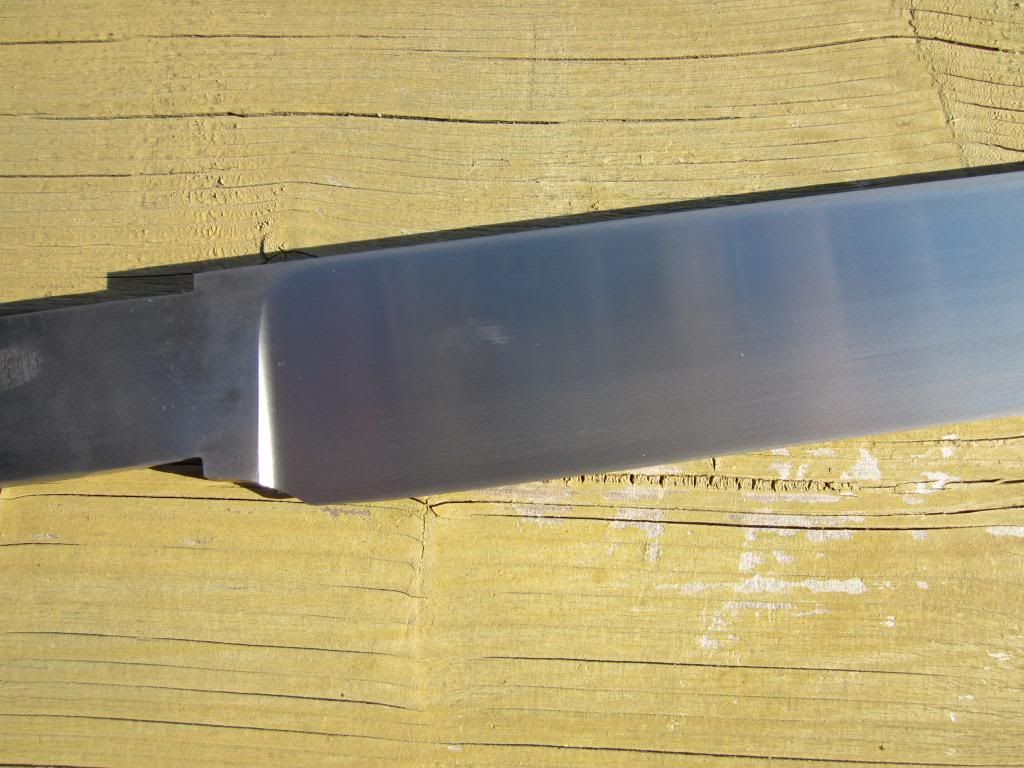This is exactly what I'm worried about.
… as it should.
However, the size and location of inclusions does play a role. In this particular example, (if that’s in fact what it is), it’s not what I would consider large and it’s location is not near the edge. So, that one or “cluster” is probably more of a cosmetic worry than a structural one. On the other hand though, most of them go un-noticed and/or are internal. It’s safer to assume that more are present, could exist in the worst possible locations and could lead to structural problems, than not. Stresses in heat treating can aggravate, make these “spots“ worse and lead to more problems and surprises.
My personal opinion is that the Parks #50 is a faster quench than necessary for this steel and blade geometry, and may be doing more damage than good. However, if the blade was forged to the edge it would help break up, “string out”, refine and minimize these potential problems, worries and concerns, as would using a bit slower quench oil. If the blade was properly forged to the edge, it would theoretically improve it’s ability to handle the rapid quenching along the edge where it's the most important.
I’m not singling you out or picking on you, but using this an example that we might be able to learn from. This type of thing is not uncommon, but rather typical and happens quite frequently.
Short term, in shop type performance testing can not always guarantee how the blade will perform in the long run either, they tend to fatigue faster when these types of inclusions are present and/or aggravated by unnecessary and/or extreme thermal stresses.
There are numerous variables that can have an effect, so I’m in no way suggesting that your blades in general are inferior or any worse than the majority of what’s out there. I'm also not absolutely sure what the "spot" is, just using it as a point for conversation.






